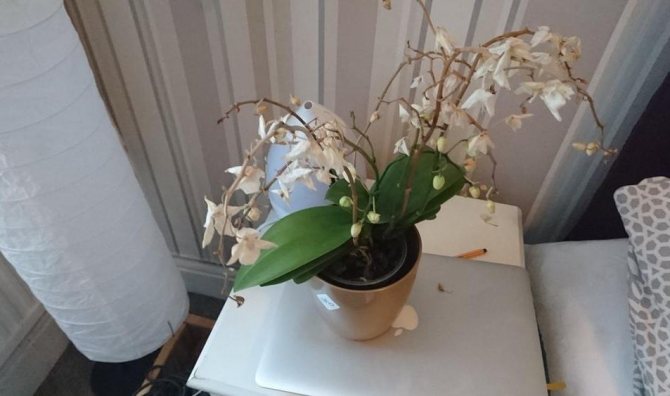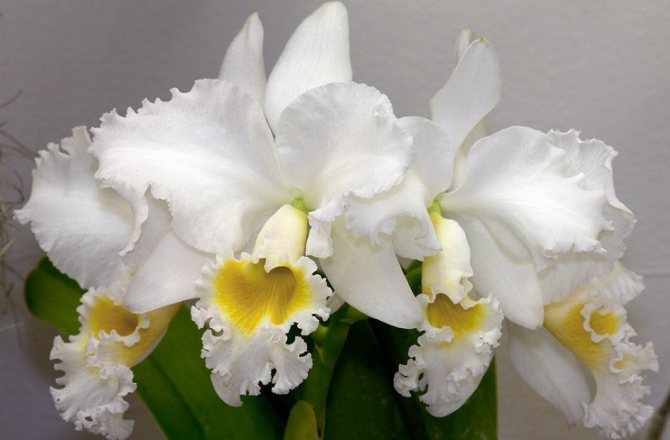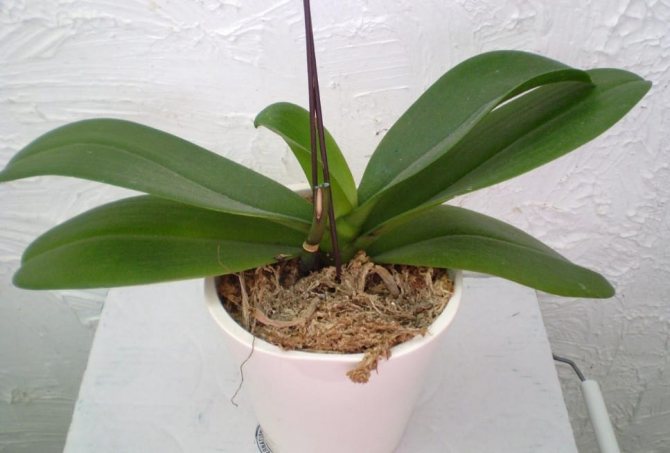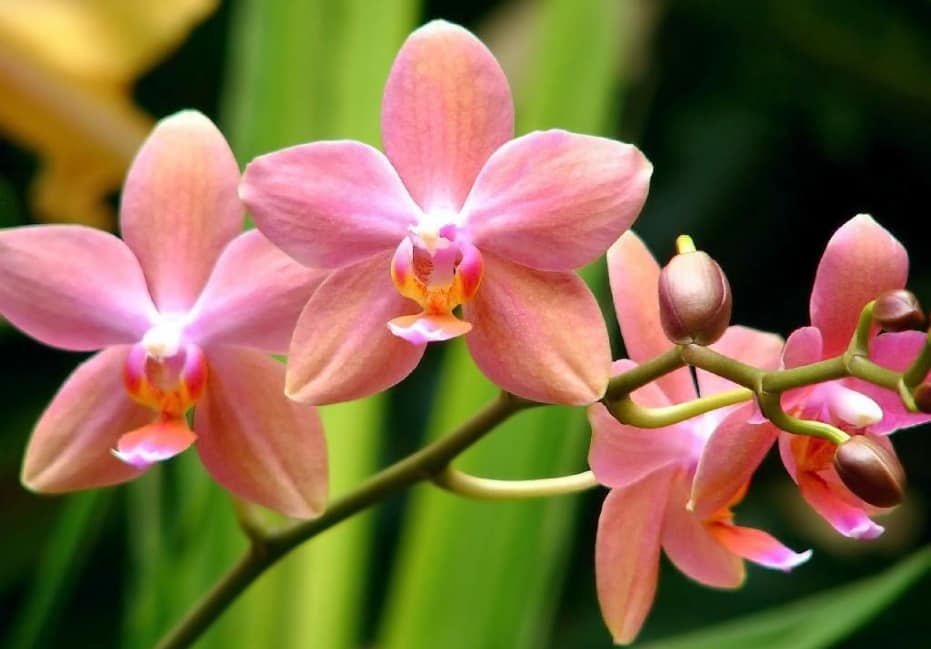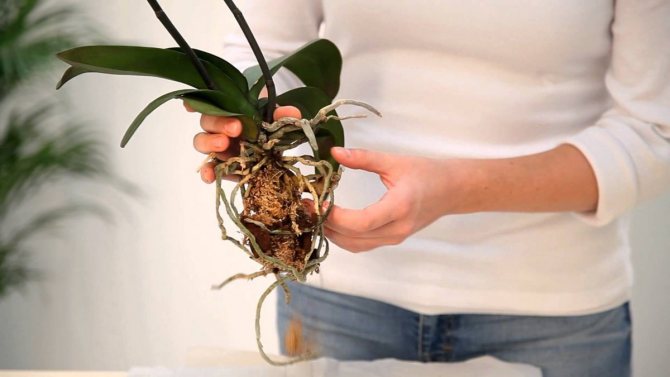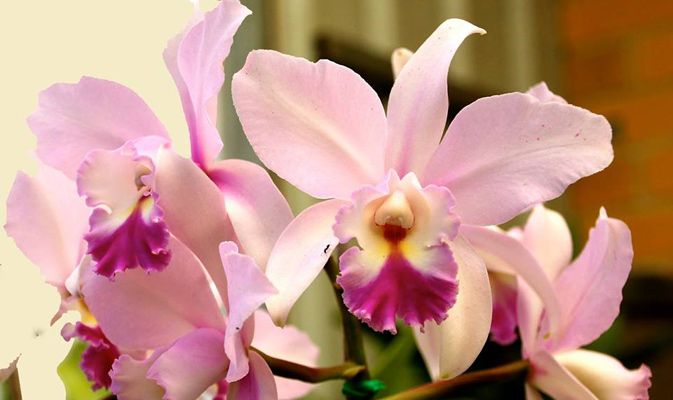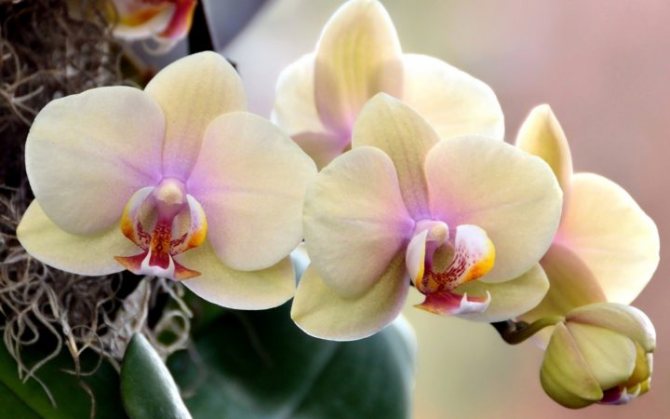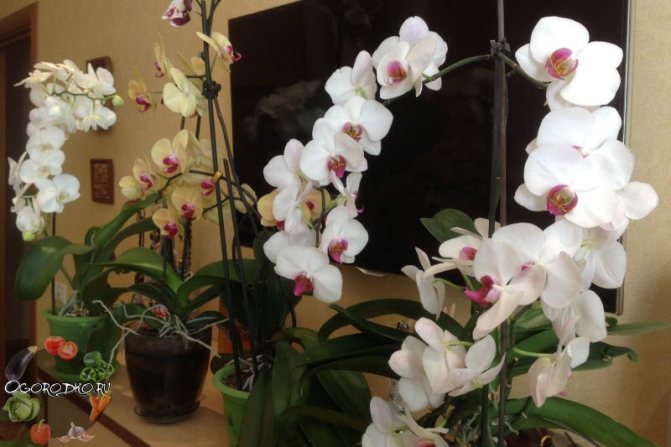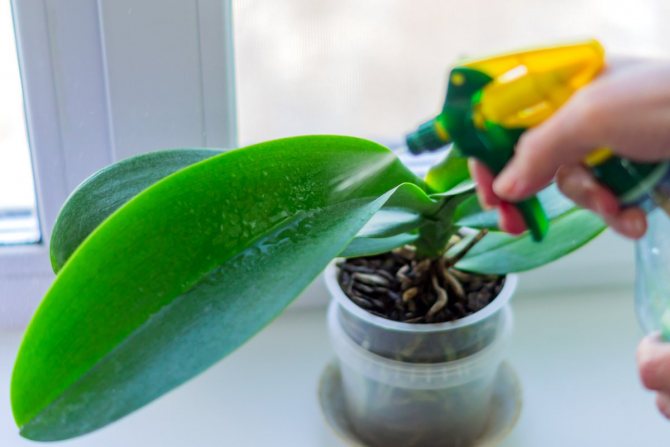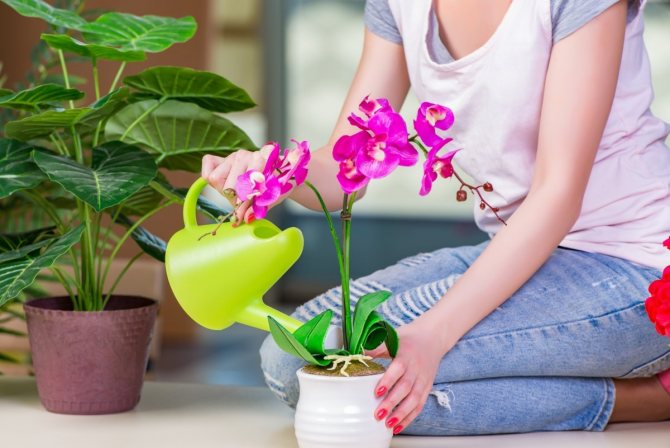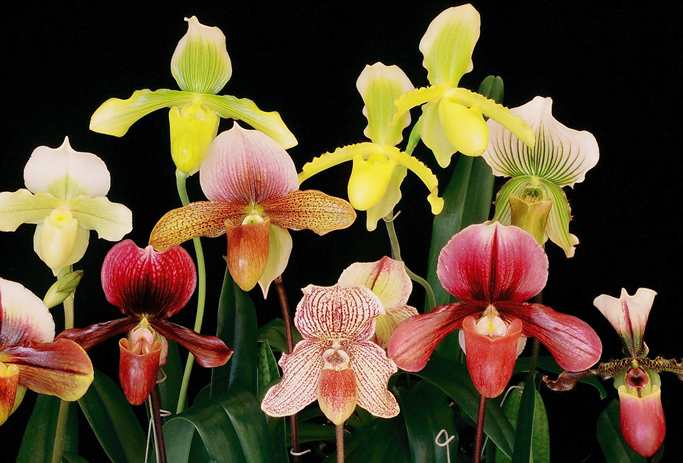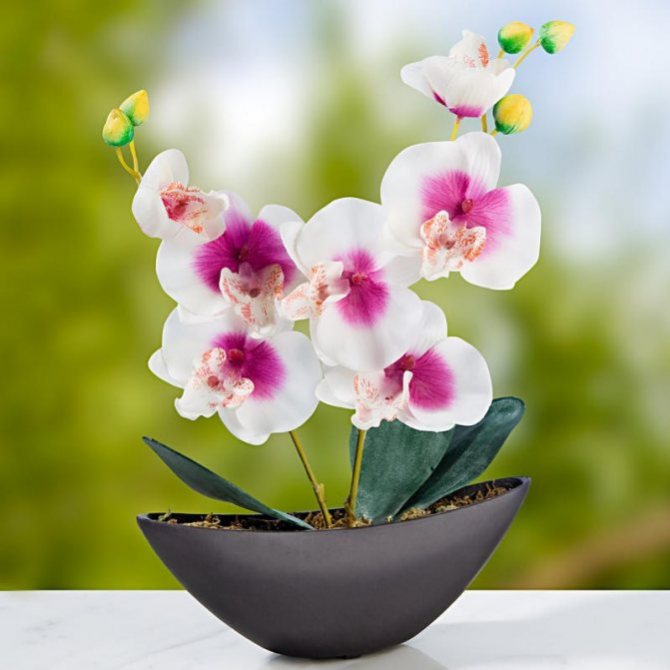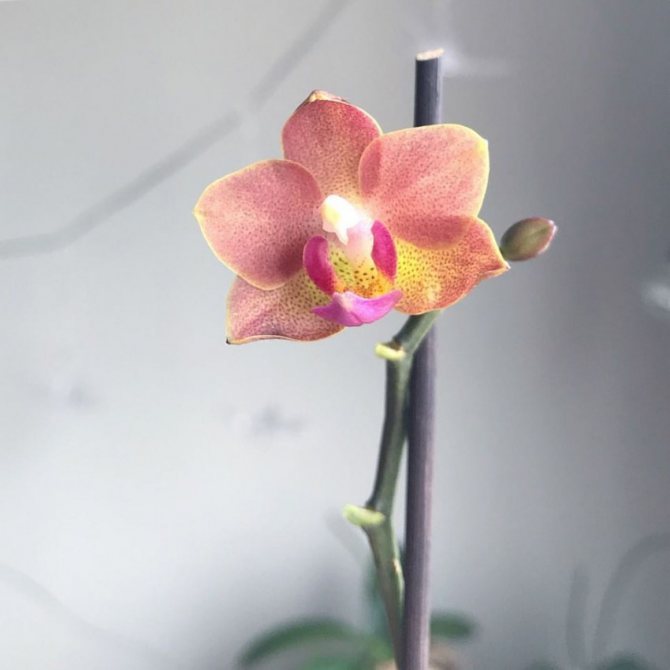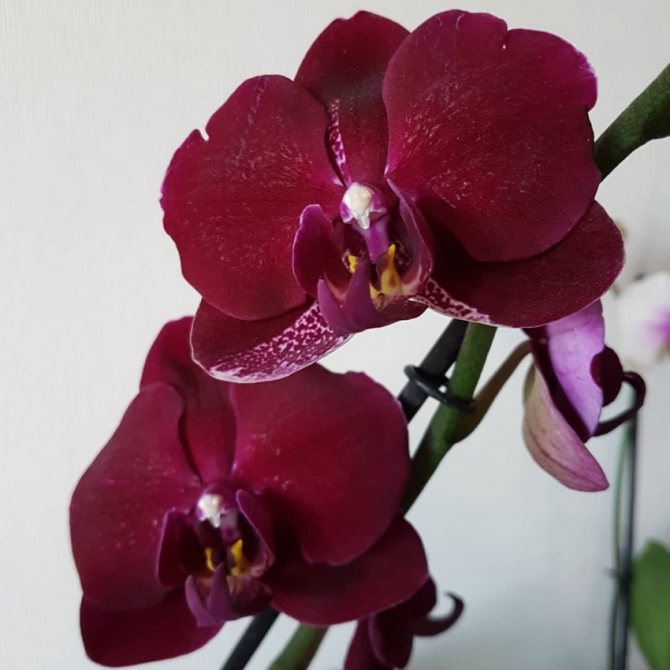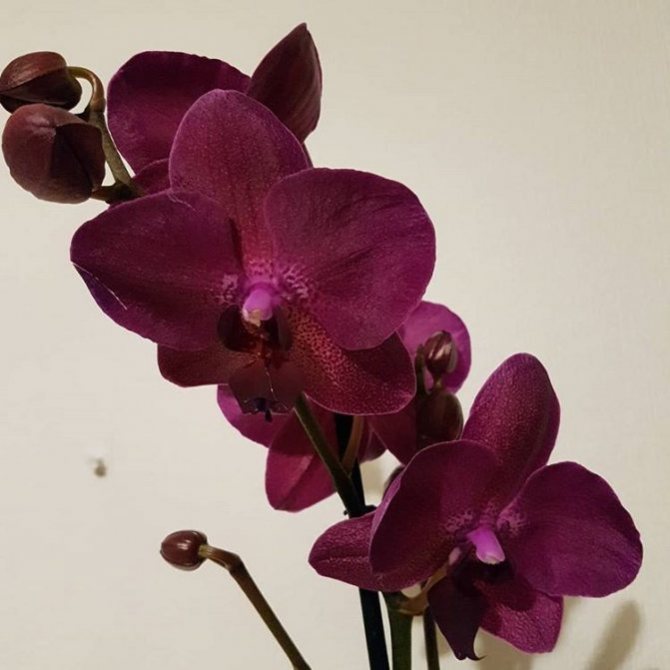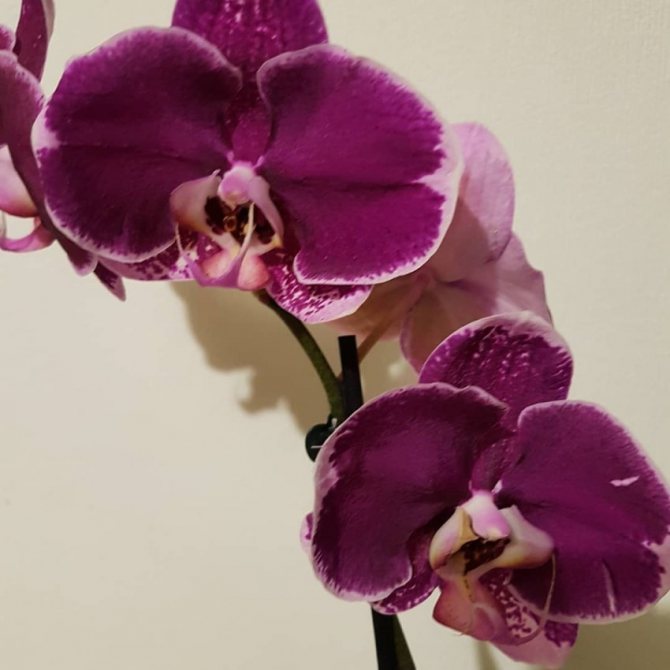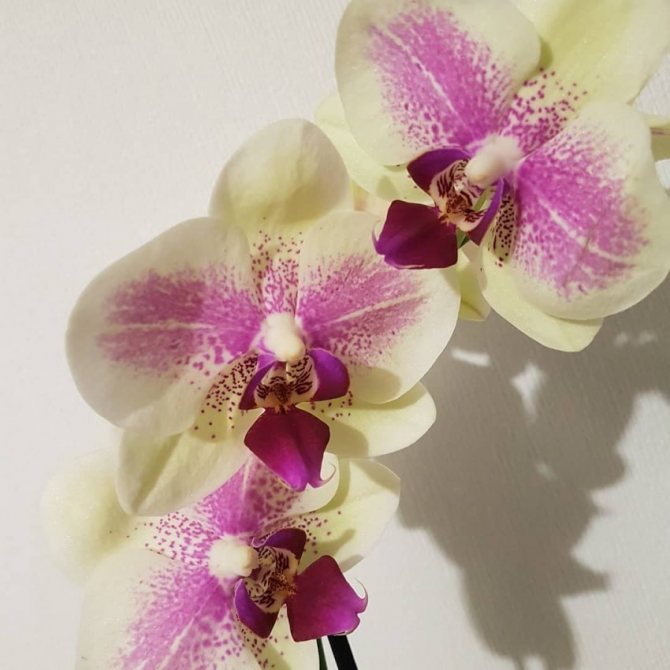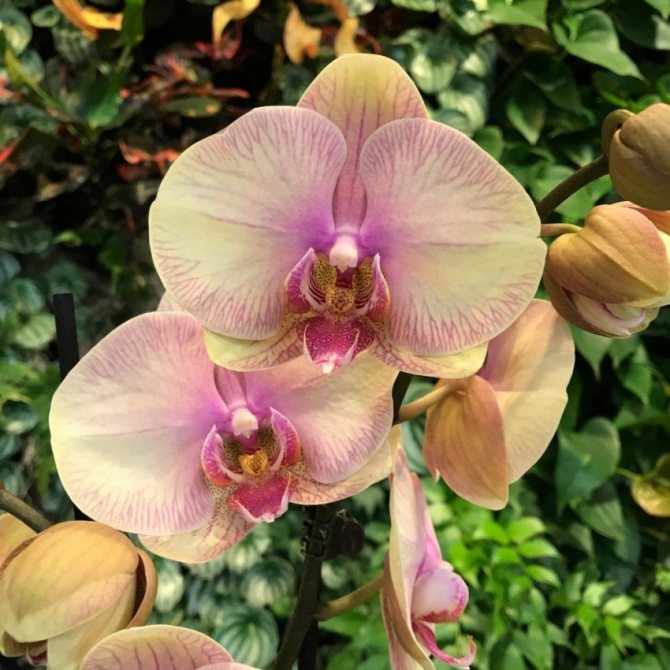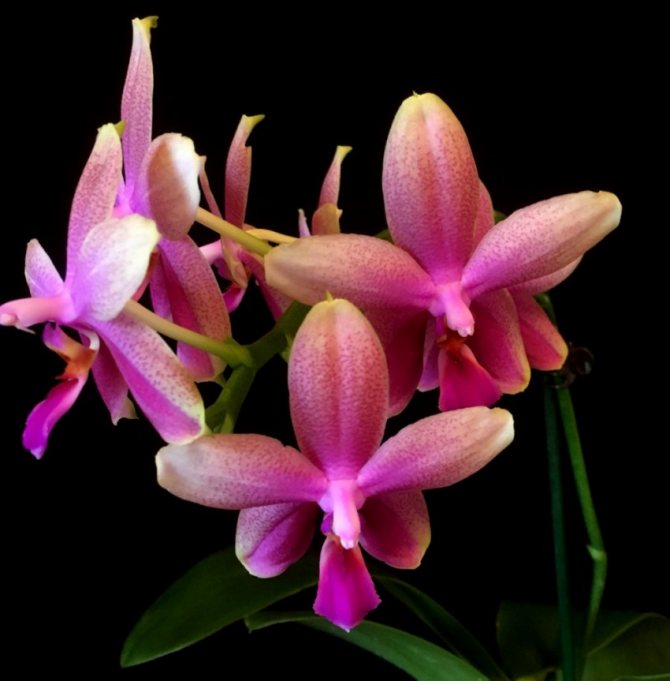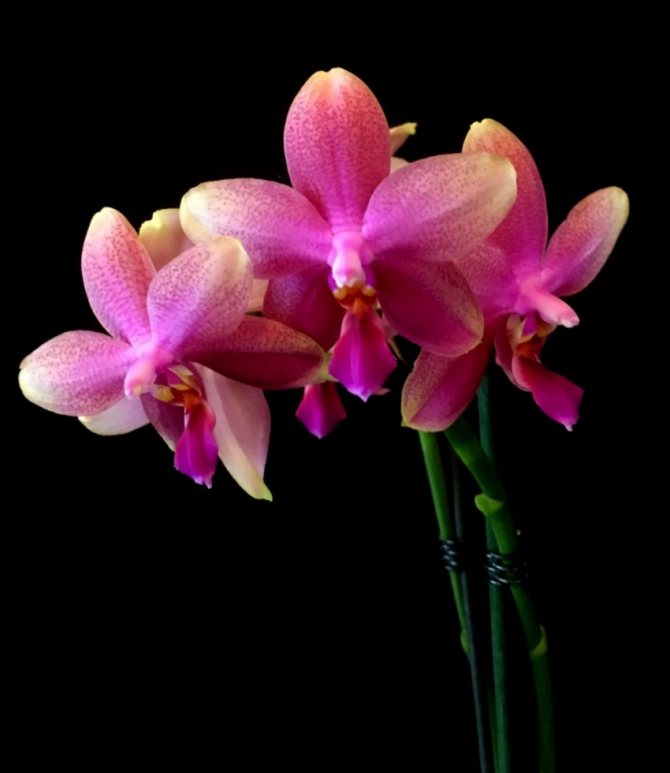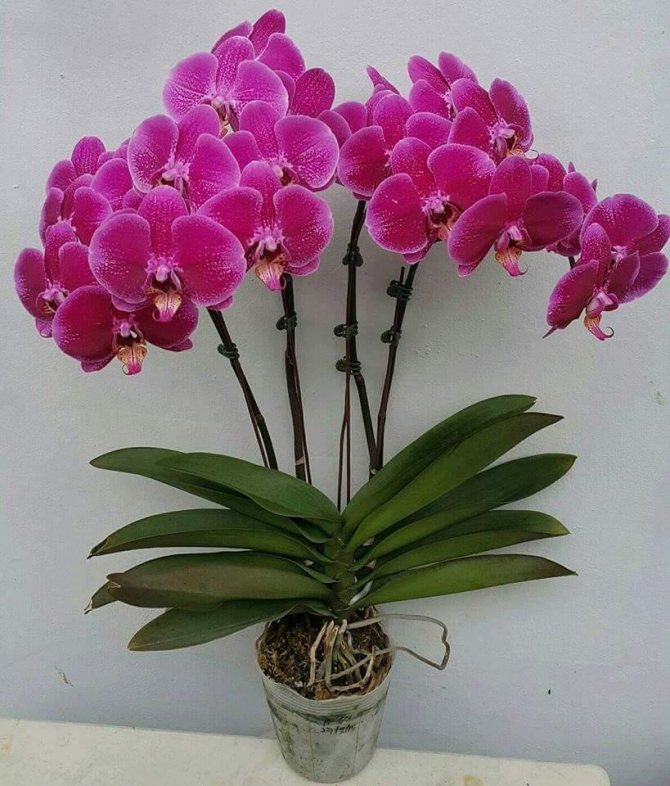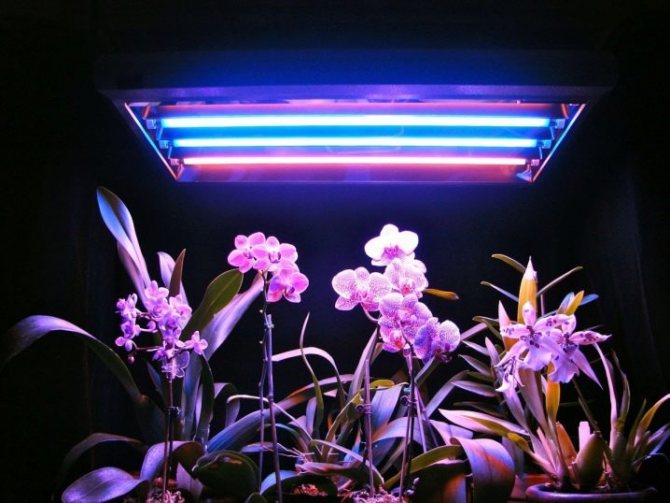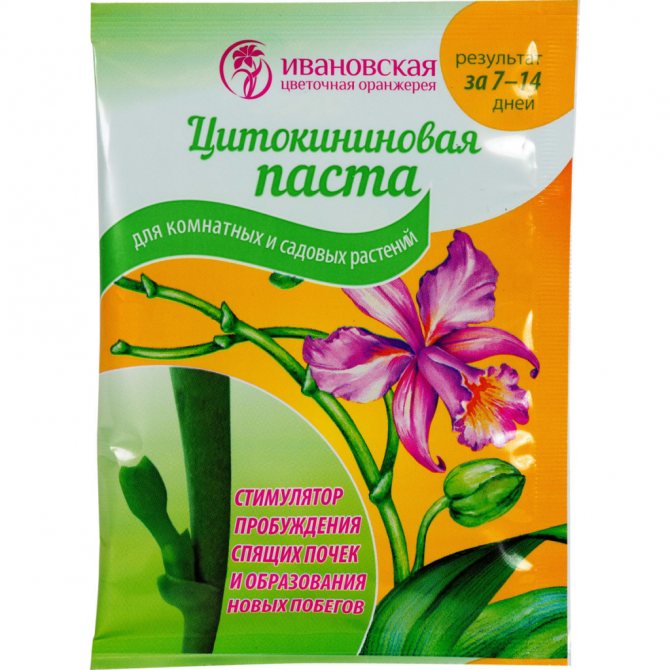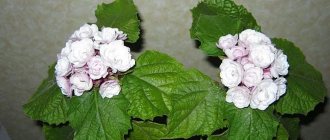Plants »Flowers
0
3204
Article rating
Phalaenopsis conquered the hearts of many flower growers, this is a flower of unique beauty, with proper care it blooms extensively and for a long time. The flowering time of the orchid is about 2 months, it can be repeated 2-3 times a year.
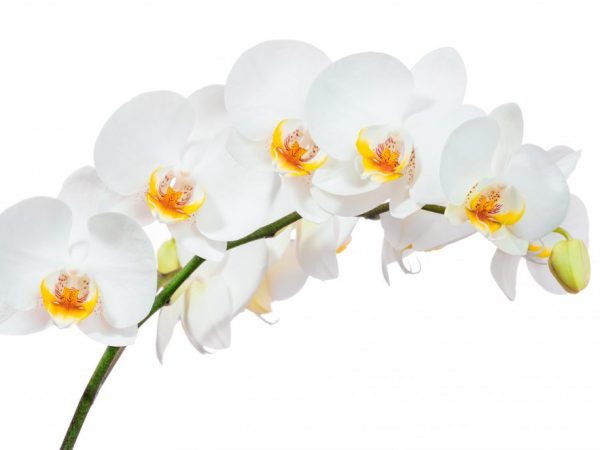
Orchid flowering period at home
Blooming at home
For flowering, the orchid requires special conditions of detention. Each variety has its own requirements for home care and its own flowering time.
A flower younger than 1.5 years does not bloom, it lacks the strength to release a peduncle. By 1.5-2 years, the plant should have formed at least 6 leaves.
Orchid flowering time is 6 months. The life of flowers is no more than 3 months, and they are replaced during the flowering process. The plant does not have a clearly defined dormant period and is not tied to the season.
How to stimulate?
Even after fulfilling almost all of the above conditions, lovers of home plants cannot achieve a lush flowering of an orchid. This happens when there is an imbalance in the main requirements for care. The following tips can help the grower and improve the condition of the plants:
- to stimulate growth in the spring and summer, certain activities should be carried out, but in the autumn-winter period - completely different; in a warm and hot period, when moisture evaporates faster, watering should be increased, the plant should be sprayed;
- the best remedy during the active growth of shoots is nitrogen fertilizer, but you should not get too carried away, because the excess can lead to a chemical burn of the roots; if you do not know the exact dose, then it is better to use a smaller amount than then spend time and effort to reanimate the orchid due to an excess of nitrogen in the soil;
- in autumn and winter, watering should be reduced, in the meantime, dry the substrate completely; if the room is too warm for the formation of flower buds, you will have to lower the temperature;
- in autumn and winter, it will also be useful to organize artificial lighting in the evening; as a fertilizer, phosphorus and potassium should be used, by applying to the soil once a month.
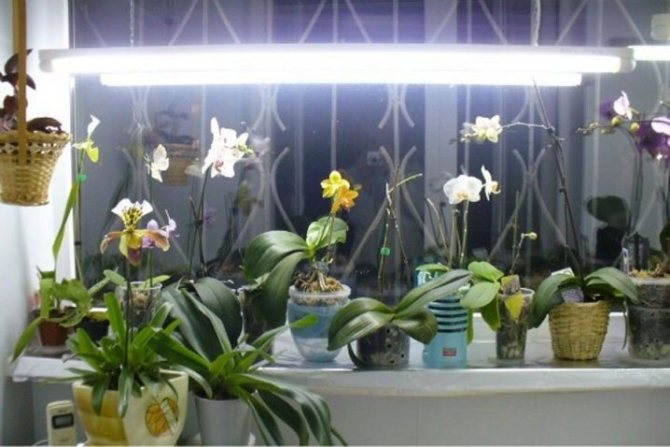

These guidelines apply to all exotic flowers. But each owner, through observation, selects his own methods of stimulating plant growth. It happens that an orchid blooms all year round, and then "falls asleep" and with all the good conditions of maintenance, it does not bloom in any way. In this case, experienced florists advise to "shock" the plant. For this, for example, you can change the place of the pot or arrange an artificial "drought" for a while. Such techniques perfectly stimulate the formation of flower buds.
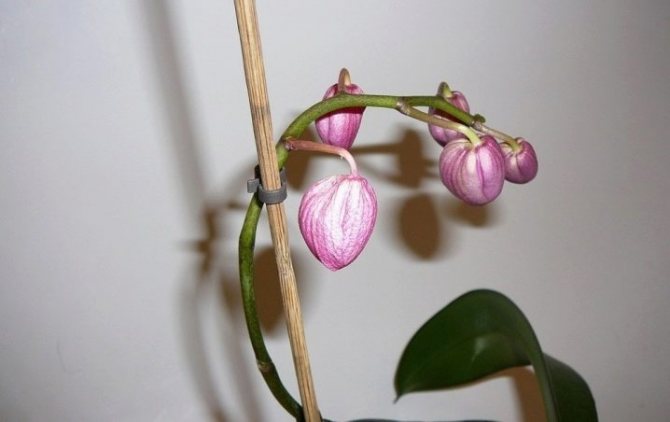

How to understand that it will bloom soon?
It is not difficult to identify signs that the orchid will soon bloom. You just need to carefully examine the stem of the plant. The buds located on it, with proper care, can develop flower stalks. Sometimes novice growers can confuse aerial roots with peduncles. The lateral processes, in contrast to the roots, are directed upward. Sometimes they can bend at the beginning of growth, but then stretch high.
The necessary conditions
Orchids bloom from 3 to 6 months a year. Factors influencing the growing season and the number of flowers:
- temperature regime;
- lighting;
- watering and moisture;
- flower age;
- root system care;
- stress from transplant or illness.
The vegetation of flowers often takes place in the summer, the peduncle climbs in the fall, and by the winter the orchid blooms. It happens that the plant produces a second peduncle in the spring, and it blooms in the summer.
How long is this period?
The minimum forecast for flowering time is two to three months. If the buds begin to wither and fall off earlier, then there may be a lack of light or moisture. If you manage to track this in time and change the conditions for keeping the flower for the better, then you can extend the flowering up to 6-8 months.
IMPORTANT! Remember that blooming too long can drain the plant and it will die.
Find tips for caring for your orchid after it has faded here.
Temperature and lighting
Orchids should bloom several times a year at a temperature of 25 ° C during the day, up to 18 ° C at night.
In the summer, take the plant pot out to the balcony, do not keep it in a stuffy box. Protect phalaenopsis from direct sunlight and avoid drafts. Orchids bloom only if there is a temperature difference.
The flower is comfortable on the eastern windowsill in the warm season, and on the south in the cold. In the cold season, the daylight hours are short, so in the evening they use a fluorescent lamp, it is worth highlighting the very top, otherwise it will not form and bloom.
Helpful hints
- Do not be lazy to find out the type and variety of the plant... This will help ensure the most favorable conditions for growth and development;
- Moisture oversaturation Is a common problem. In order not to expose the roots to decay and reduce the risk of kidney death, it is worth paying special attention to watering;
- Don't forget about the south side of the window... This little trick will help increase daylight hours. It will also provide the plant with a natural temperature drop.
Substrate selection and root care
Suitable soil for orchids, which contains bark and moss. Before planting, the substrate is soaked for a day, then washed and allowed to drain excess water.
The roots of the flower are actively involved in photosynthesis and need light, so a transparent plastic pot with drainage holes is suitable for better air exchange and water drainage.
Trim dry and rotten roots in time using a sterile pruning shear. Always treat the cut points with an antiseptic or crushed activated carbon.
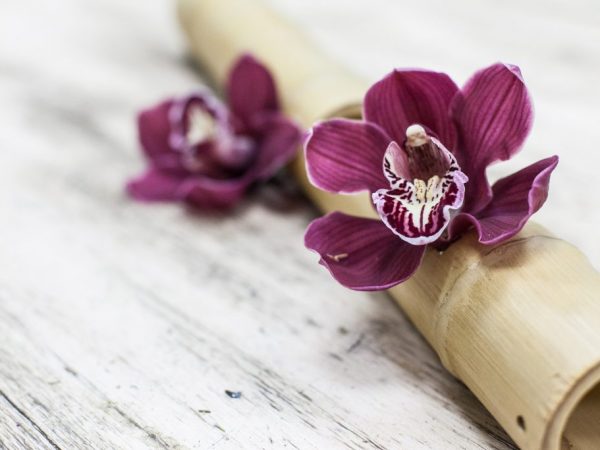

We fertilize the soil regularly
Before transplanting, carefully remove the flower and clean it from the substrate. Place the plant in a pot, cover the roots with substrate and bark, put moss on top, it will retain moisture in the soil. The transplant is carried out only in the dormant stage or immediately after flowering. The orchid will take a little time to adapt.
It is important to fertilize the soil in a timely manner. Any flower shop sells a mixture that is suitable for orchids. It is used according to the instructions. The flower is fertilized during the dormant period, it is then that the plant accumulates strength for the next flowering.
Position
Sometimes people do not simply do not understand why the orchid does not bloom, but at the same time they often change their position in the house. Surprisingly, many simply do not know that frequent changes in the environment have an extremely negative effect on the overall health of the orchid.
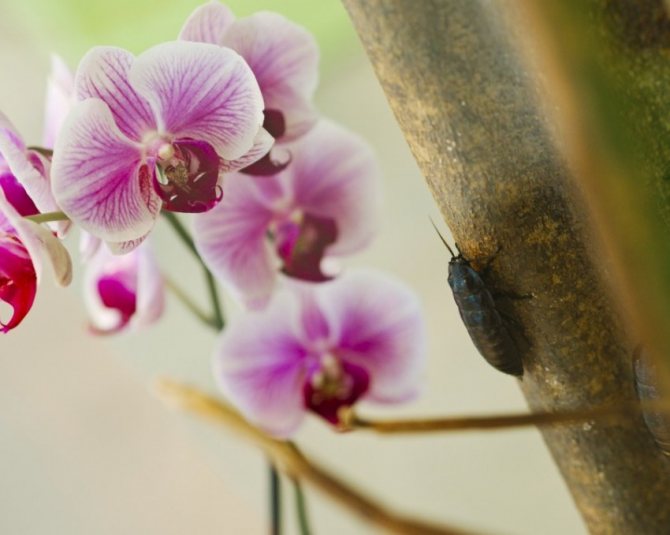

It would be best to immediately choose a suitable place in which the flower pot will be for a long time. In this case, you need to take into account the light sources, because the orchid is very whimsical to it. When changing her position in the house, it is worth considering which side to the light she stood, and not changing this even when changing the room.
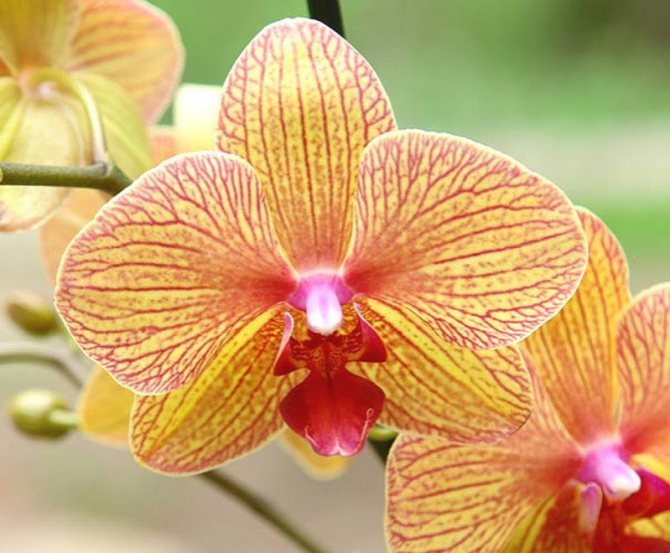

In addition, you do not need to move the pot while watering unless absolutely necessary, as is the case with a warm shower. Frequent changes will interfere with the formation of the peduncle, and, therefore, delay the flowering process.
Peduncle formation
The peduncle is the shoot on which the buds are formed.It is often barely distinguishable from a young root and grows in different directions.
The peduncle is formed in the axils of the leaves, has a sharp tip, on which scales are already visible. It is important not to disturb the orchid with transplants or movements during this period, and not to provoke stress.
Duration of development
The orchid blooms at home in late autumn. Sometimes, simultaneously with the peduncle, the phalaenopsis also releases a young leaf.
Flowering takes place in several stages:
- the first flower gives buds;
- after the inflorescences bloom.
The break between them is 1.5-2 months. Only an adult flower can bloom long and beautifully. The small orchid has not yet gained strength to form a peduncle. Additional stimulation will harm her, the plant will die.
Drying of the peduncle
This is a natural process that indicates the end of flowering.
Watch him for a while: when all the buds are dry, the peduncle is removed. Carefully cut off the process with a sterile pruning shears, leaving a small stump at the base, treat the cut site with crushed activated carbon.
When the orchid rests and regains its strength, it will begin to bloom again.
Why the orchid does not bloom
It is not at all necessary that your orchid does not bloom. because you did not provide her with appropriate care.
Any flower, be it a simple dandelion, or a luxurious rose, blooms in due time. And this simple rule applies to orchids as well. Perhaps her time has simply not come yet.
The orchid does not bloom until it reaches the age of one and a half years. And just by this time, 6-8 leaves appear.
Moreover, if suddenly your orchid, for some reason, decided to release a peduncle before the formation of the required number of leaves, many growers recommend stopping such attempts. Otherwise, the plant will be weakened by early flowering, and may even die.
The ten-day quarantine has passed, and the phalaenopsis orchid in a transparent pot with holes has settled on your windowsill. In the morning it is illuminated by the rays of the still cool sun, a transparent pot with holes stands in a bath with warm water. The leaves are smooth, beautiful. bright green. But there is no peduncle. Why? What should be done to make an orchid bloom?
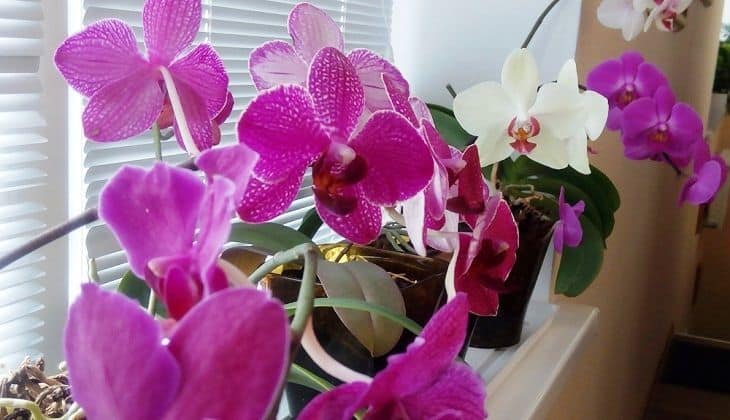

Try to drastically change the conditions of her departure. For example, create a contrast in temperatures. For example, take your orchid out onto the balcony at night (this, of course, should not be done in January). In April-May, it is much cooler at night on the balcony than in the room during the day, and even on a sunny window. Send the flower to a cool place to sleep.
You can try a hot shower. Naturally, it should not be boiling water, but water up to 40 degrees. Pour hot water over the flower for about a minute.
All these methods will wake up your orchid, and it will definitely release a flower stalk.
Lighting
Since the plant must be completely healthy in order to get the phalaenopsis orchid to release a peduncle, first pay attention to the root system and leaves.
If there are any problems, they need to be fixed. If a healthy plant continues to refuse to release a peduncle, you can resort to the following stimulation methods.
There are ways to stimulate with chemicals. How to water the flowers so that they bloom: let's examine the most popular drugs.
A popular growth stimulant is Epin, which is sprayed on the plant every day, preferably in the morning. Once a week, phalaenopsis is watered with the addition of the drug to the water (3-5 drops).
Watering with a solution of succinic acid, which is a growth regulator and an anti-stress drug, will be beneficial for the flower. Dissolve 2 g of acid in 1-2 liters of water.
With this solution, you can treat the plant as a whole by spraying it. The diluted form should not be stored for more than three days.
One of the ways how to stimulate the flowering of an orchid is to organize temperature changes: for example, you can take it out on the balcony at night.
It is recommended to keep the plant at a temperature of about 18 ° C at night, and then move it to a warmer place. This stress usually triggers the flowering process.
Watering limitation
The question "What to do to make the orchid bloom?" very popular with its owners. You just need to limit watering - this method requires absolutely no effort, just give the plant a drought.
In this way, even a plant overfed with nitrogen can be made to bloom. This method is based on the study of the natural habitat of flowers.
In the tropics, the rainy season is always preceded by a period conventionally called "dry", which lasts 1-3 months. Then the orchids enter the resting stage.
By this period, the growing season usually ends. At home, it is enough to reduce watering during the growth of new shoots, but not at the end of the growing season. In this case, flowering is almost guaranteed to occur.
Pruning orchids
Consider a method on how to wake up a phalaenopsis orchid by cutting off a peduncle. There are several dormant buds on it. The peduncle is cut a couple of centimeters above the bud.
Bloom will be more abundant if you cut it as close to the outlet as possible.
From the above material, we can conclude on how to make an orchid bloom at home. You need to try to create optimal conditions that are as close as possible to the natural habitat of this flower.
After the purchase, the orchid fades, the owner of the beauty begins to wait for a new flowering. Sometimes you have to wait six months (the plant rest period), but, in general, the wait is delayed for a longer period. How to get an orchid to release a peduncle? Why does a friend have it blooming for 6 months, but still can't shoot an arrow at your window? Let's figure it out.
We put in place a capricious flower. The orchid is a resident of the tropics, and does not distinguish between winter and summer, but it perfectly distinguishes between periods of drought and heavy rains. In order to make an orchid bloom at home, you need to use shock therapy, change the conditions of detention, and most importantly, the place. Moreover, the location must be changed radically - put the plant under the sink for a month and leave it without watering.
Chemical attack. If the orchid does not shoot an arrow, you can use various growth stimulants, for example, Epin, Stimulus or Success for orchids, for this in the morning you need to spray the plant according to the instructions, and once a week soak the flowerpot in warm water with the addition of the drug.
How to make the Cymbidium orchid bloom? It's late summer, and the orchid is in no hurry to shoot an arrow. Cymbidium releases leaves, but does not bloom, how to make it shoot an arrow? Arrange a pretty shake - limit watering and reduce the temperature at night to 10 ° ... 13 ° C., such measures will contribute to the growth of the peduncle. When the arrow begins to grow, tie it to sticks so that it does not bend over and grows straight.
If the orchid does not bloom, then there is a need to provoke the release of the arrow. It is worth reducing the amount of nitrogen in top dressing, correctly conducting a drought regime, maintaining the usual temperature. Then, in a couple of months, new flower buds will appear. It is not difficult to organize a drought for a flower, for this you need:
- reduce watering to once every 4 days in hot weather and once a week in cool temperatures
- organize lighting with cold lamps no higher than 40 cm from the top of the plant
- exclude spraying and feeding the flower
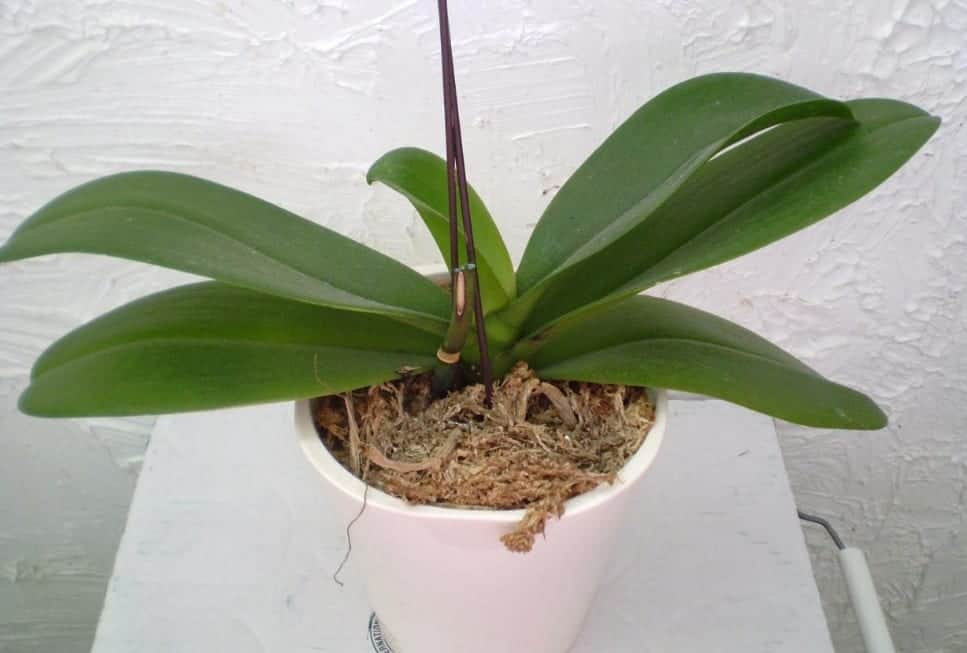

With the correct maneuver, the lower leaves of the beauty will become soft, the peduncle will grow, soon pleasing with abundant flowering.
When buying an adult flowering plant, you can be sure that with proper care, the orchid will delight with its beauty often and over a long period. However, if the flower was planted from the "kids" or was transplanted, it will take a long time to wait.
Experts recommend not rushing things, but be patient and wait. If the plant is very young, then earlier than 2 years after planting in a separate pot, it will not bloom. By the time the first flower appears, the phalaenopsis should have 6 leaves. In addition, a sufficiently developed root system will become noticeable. If flowering began earlier, this is a bad sign that speaks of improper care.
After transplanting into a new container, you do not need to wait for flowers very early. The first six months for an orchid are spent on restoring and building up the root mass. Only then can the phalaenopsis release the first arrow. The best option would be the period when powerful roots become visible in the plant. As for the question of how the orchid begins to bloom, first the roots come out a little to the surface, as it should be for a healthy flower, then new leaves appear and flowering occurs.
The main thing at this stage is to give phalaenopsis everything it needs for normal development. This should be correct watering, diffused lighting in the dark, constant temperature and humidity. It is worth noting that orchids are very difficult to tolerate when the air temperature changes at night and during the day. Therefore, everything must be foreseen so that the indicators do not jump by more than 5 points.
Feeding is especially worth noting. Many flower growers know that orchids cannot develop normally without them. But it is important to choose the right fertilizer. For the period when the phalaenopsis will not yet bloom, it must be fed every 10 days with liquid fertilizer with nitrogen. After the appearance of an arrow with a future flower, it is necessary to immediately suspend fertilizing watering.
Growth stimulation
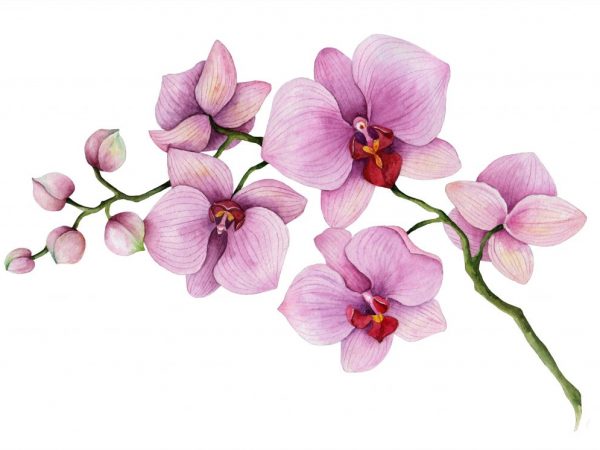

Know when to water and how
If the plant does not bloom for a long time, the following actions can be taken:
- Reduce watering by 2 weeks;
- Reduce temperature to 16 ° C.
After that, a peduncle appears from the sleeping bud. They also use ready-made liquids - growth stimulants, spray them according to the instructions.
When should you worry about missing buds?
If the plant was purchased recently, then first you need to determine its age. This can be roughly done by counting the number of shoots. If there are five or more of them, then the orchid is about two years old and it is ready for the appearance of flowers. In the event that the plant is old enough, but still not preparing for flowering, there is cause for concern. Most likely the orchid lacks light.
For normal development, the plant needs to receive light. for ten to twelve hours a day. If such conditions cannot be met naturally, then artificial illumination must be produced. Also, the reason for the lack of flowering may be insufficient or excessive watering.
Important. You can not constantly transfer the orchid from place to place. If the plant often changes its location, then flowering will take a long time.

